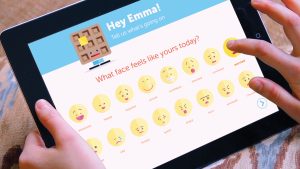
Photo by Kevin Ku on Unsplash
I have narrowed down my inquiry for this blog (and this course) into an exploration of the effects of digital technology use on young children’s development. I know that there are some strong feelings from both sides: those who see technology as a barrier to healthy child development, and those who feel that by providing children with these tools we are giving them an edge in this technologically driven word. My goal is to sift through the studies and explore the academic and professional literature to come up with an evidence-informed guide for practice. As I work with infants, my focus will be for very young children, but I expect there will be more literature for school-aged children, and this will likely take some sifting.
The task I’ve been set this week was to explore some of the existing projects submitted by UVic students in partial fulfillment of their MEd degrees. I selected Pina Hendry’s project entitled What is the Impact of Digital Technology on Young Students? , which seemed an obvious fit for my inquiry.
Right away I could tell that the author approached the topic with a fair amount of caution. As a kindergarten teacher practicing for over 20 years, she had noted the decline in fine motor skills of entering students, among other changes to things like attention, and language skills. The literature she reviewed seemed to provide evidence to support her opinion that digital technology has detrimental effects on cognitive, social, emotional, and physical development. As a practitioner, I have shared this opinion and abide by the Canadian Paediatric Society’s screen time guidelines for young children (found here). However, as with everything else in life, I find that the more I examine a topic, the more nuanced it proves to be. When one refers to digital technology there are so many possible candidates that lumping them all together under the umbrella of ‘digital technology’ and making sweeping proclamations seems disingenuous. Indeed, the literature reviewed looked at samples as varied as television, violent video games, pornography, and social media. I did not see any reference to the apps, programs, games or sites designed to educate or encourage healthy development, of which even I know there are at least some out in the world.
My impression of the project was that by focusing on the dangers of digital tech use for children, we can really see how dangerous they are. I agree that unfettered and unsupervised access to these technologies can be detrimental to each aspect of development. However, while engaging my inner skeptic, I did not see that the opposing argument was adequately accounted for.
In order to balance my view on the topic, I wanted to hear an argument from the other side, and came across the TED talk by Sara DeWitt called 3 Fears About Screen Time for Kids – and Why They’re Not True. Now, my inner skeptic was engaged for this too, and this whole experience is supporting my hypothesis of learning: the more you learn about something, the less able you are to give a definitive answer to a simple question about it.
DeWitt addressed the 3 fears (a. screens are passive; b. playing games on screens is a waste of time; and c. screens isolate parents from their children) and responded to each one with an example. The problem I found was that for each fear, she provided an example of a single app or program that addresses that fear. She did not say that the fears are unfounded, or that they were not true, despite the title of the talk.
So, in reflecting on both the master’s project and the TED talk, I found that neither Hendry nor DeWitt support unfettered, unsupervised access to digital technology for young children. They also both advocate for thoughtful planning and supervision by parents to ensure that the digital tools children are accessing are appropriate, and if not support, at least not hinder healthy development. Despite seeming to come at the issue from opposite sides, Hendry and DeWitt come to the same conclusions: caution is necessary.


Recent Comments